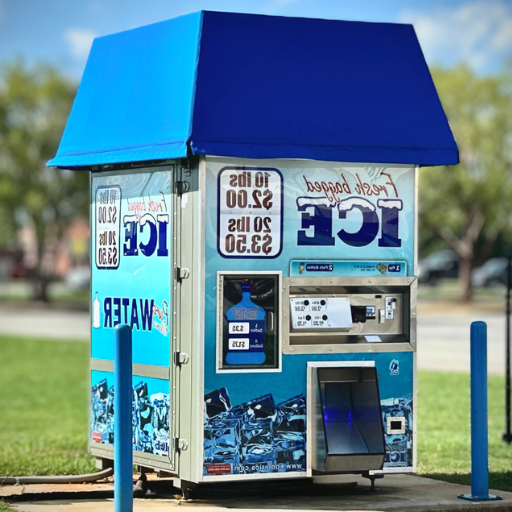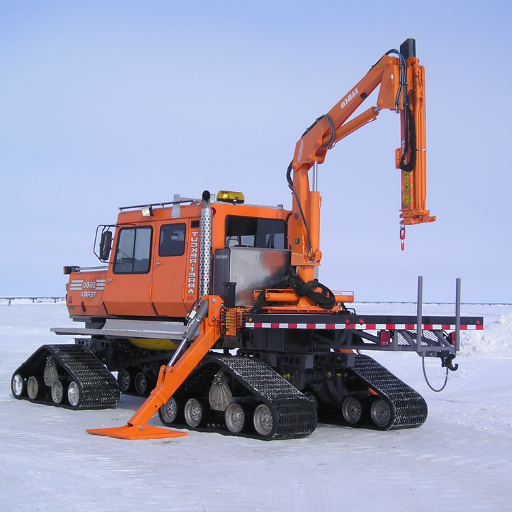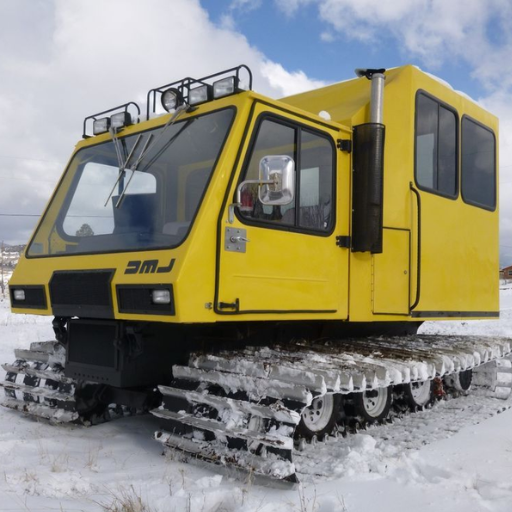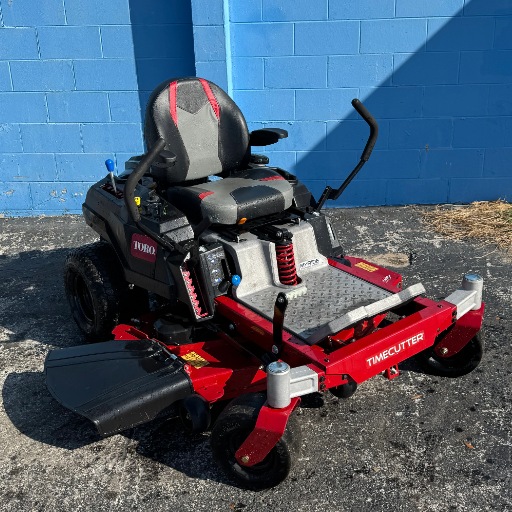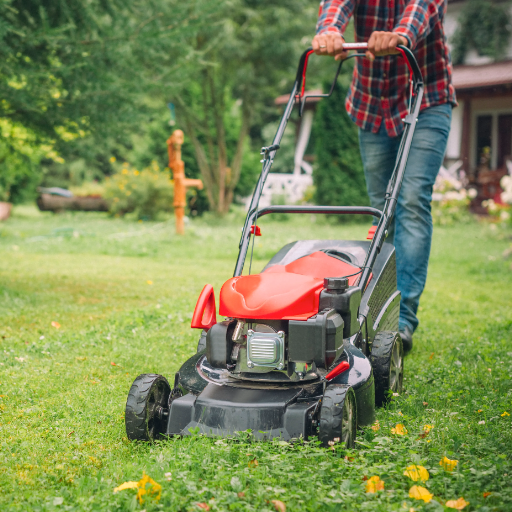Maintaining a lawn is all about keeping it immaculate, and the proper lawn mower is essential. However, sometimes buying brand new equipment is a bit heavy on the budget. That’s where the used lawn mowers come in, giving you a cheaper route on your purchase without compromising quality and performance. This guide will take you through everything you need to know about buying used lawn mowers-from identifying trustworthy sellers to spotting the best deals available. Whether you’re a homeowner ready to upgrade your lawn tools or a first-time buyer just discovering cheap lawn equipment, this article will guide you to make good decisions that will ensure you buy the hardware of your choice.
Understanding Used Lawn Mowers
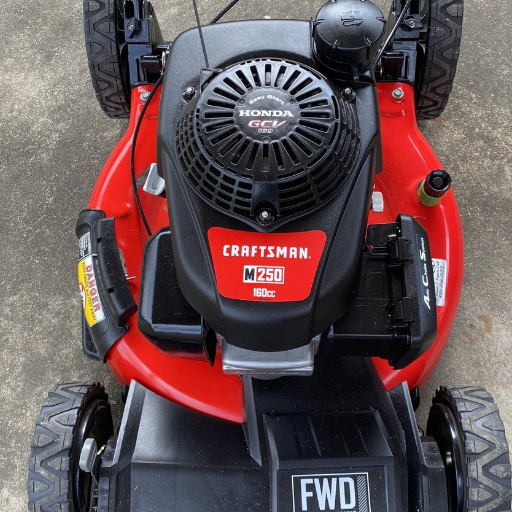
A used mower can be a good option for yard maintenance if you want to save a huge amount on the price of a new one. While assessing a used lawn mower, you have to consider the overall condition, maintenance history, and brand reputation of the mower. Examine the engine, blades, and tires for any signs of wear or damage, as these are critical for it to work well. Look for rust or leakage and, if you can, even test the mower to see if it is running smoothly. Usually, go for famous brands as their parts are easier to find and come with a record of reliability. By concentrating on this, you should thus be able to pick a used lawn mower that fits your price range and functional requirements.
What is a Used Lawn Mower?
A used lawn mower is a pre-owned gardening tool intended to cut grass to an equal height. These come in various types such as push mrolle, self-propelled machines, and ride-on mowers for different lawn sizes and terrains. Some of the benefits of purchasing a used lawn mower are the enormous amount of money one can save and the ability to own some of the very best models at a mere fraction of the original price. Depending on the brand and the level of maintenance and usage of the mower, a good used mower well maintained may keep working for anywhere between 7 and 10 years.
Used mower searches require a set of keys such as performing well on the engine, having blades that are sharp enough, and having good structural integrity. Riding lawn mower price range usually for large properties may go from $500 to $2,500 for used ones, depending on the year and condition. Mowers for small lawns, on the other hand, would be $100-$400. Prospective buyers are increasingly recognizing fuel-efficient and environmentally friendly electric alternatives as other options available. Using a secondhand lawn mower certainly makes economic sense and will help reduce waste by extending the life of these machines.
Benefits of Purchasing Used Equipment
Purchasing second-hand machinery can be a lucrative proposition for an individual or a company seeking to minimize investments without scrimping on quality. Essentially, a used piece of equipment may cost one-half to even a fifth of the cost of its new counterpart, amounting to considerable savings while considering that depreciation plummets very fast for equipment such as tractors or tools used in industries shortly after the first day of its usage.
Second-hand equipment also supports sustainability. The user of the used equipment is eliminating waste and CO2 emissions that could have been caused during the manufacturing of new equipment, thereby enabling a circular economy. For instance, a well-maintained lawn mower or power tool would still offer several years of reliable service to its new owner, greatly extending the lifecycle of these products.
There is also the possibility that many of the used machines are refurbished or sold under warranty by reputable sellers, and they would guarantee quality. Auctions and resale networks for equipment maintain detailed maintenance records or conduct inspections, so a secondary buyer is offered transparency regarding the history and performance of a product. That transparency could give you confidence to make an informed purchase and stretch your tight budget.
Environmental Advantages of Reusing Lawn Equipment
Reusing lawn equipment ends up being environmentally friendly by reducing wastage, saving resources, and lessening overall carbon emissions. Buying refurbished or second-hand equipment ensures a lesser number of things from being sent to landfills, mitigating environmental damage caused by such discarded tools. According to studies, the manufacturing of lawn equipment is high in carbon emissions because the production involves a very energy-intensive process involving raw material extraction, such as steel or aluminum. Extending and therefore making use of equipment refills demand for new types and reductions in the depletion of these non-renewable resources.
On the other hand, little energy is consumed when fixing lawn equipment when compared to manufacturing new ones. This implies that fewer carbon footprints are released in the environment, which is a step towards fighting climate change. Studies show that reuse and recycling of consumer goods lead to a decline in greenhouse gas emissions over time.Lawn equipment reuse, therefore, would support and promote the circular economy, where resources are kept in use for as long as possible in order to maximize their value and reduce harm to the environment.
Popular Brands of Used Lawn Mowers

When purchasing a used lawn mower, certain brands are known for their reliability and performance even after extended use:
- Honda – Renowned for durability and efficient engine design, Honda lawn mowers are a top choice for long-lasting performance.
- John Deere – A trusted name in outdoor equipment, John Deere mowers are valued for their robust construction and dependable cutting capabilities.
- Toro – Known for ease of use and innovation, Toro mowers often feature user-friendly designs and consistent quality.
- Craftsman – Offering a balance of affordability and reliability, Craftsman mowers are widely available and reputable for home gardening needs.
- Husqvarna – Highly regarded for advanced design and versatility, Husqvarna mowers perform well across varied conditions.
These brands represent proven options for used lawn mowers, delivering both quality and value for consumers.
Toro: A Reliable Choice
Toro has created a solid brand throughout the years for making lawn mowers that are highly durable yet characterized by multitasking ability with different needs. With more than one hundred years of innovation, Toro has been excelling in engineering equipment with the best balance among power, efficiency, and ease of use. Its lawn mowers are marketed both to private buyers and industries, offering a whole lot of varieties, including walk-behind mowers, zero-turn mowers, and robotic mowers.
One key highlight of these mowers is the patented Recycler® Cutting System that finely chops the grass clippings into nutrient-rich mulch to nurture the lawn. Also, some transfer smart connectivity features that allow the user to adjust the mowing schedule remotely through a mobile application- a very convenient feature for today’s homeowners or businesses that want to maintain their landscapes with minimal effort.
In terms of durability and warranty, Toro mowers perform good. Several models have a cast aluminum or steel deck for their life; warranties generally come in 2-5 years with options to extend. The industry reviews favor Toro mowers for a low-maintenance and long-lasting performance, thus regarded by landscaping professionals.
According to sales data from recent times, the Toro brand sits amidst being a top contender in the market amongst various lawn mower brands for consumer satisfaction. Its reliability and constant innovation on products have thus made it the preferred choice for those who want it both dependable and feature-laden with advancements.
Zero Turn vs. Traditional Mowers
Zero-turn mowers are faster, more precise, and ideal for flat terrains, while traditional mowers are versatile, cost-effective, and better for uneven or hilly landscapes.
|
Parameter |
Zero-Turn Mowers |
Traditional Mowers |
|---|---|---|
|
Speed |
Faster (up to 8 MPH) |
Slower (3-5 MPH) |
|
Maneuverability |
High (zero-turn radius) |
Moderate (wide turns) |
|
Terrain |
Flat, obstacle-rich |
Hilly, uneven |
|
Cut Quality |
Precise, uniform |
Good, less precise |
|
Versatility |
Limited (no towing) |
High (attachments) |
|
Learning Curve |
Steep (lap bars) |
Easy (steering wheel) |
|
Cost |
Higher ($2,500-$10,000+) |
Lower ($1,500-$4,000) |
|
Comfort |
High (ergonomic seats) |
Moderate |
|
Storage |
Requires more space |
Compact |
Features to Look for in Self-Propelled Mowers
Selecting a self-propelled mower requires a prior consideration of features suited to your lawn care needs. One of the most important considerations is the drive system of the mower. The options here are front-wheel drive, rear-wheel drive, and all-wheel drive, each offering different advantages in different terrains. Front-wheel drive works great on flat, even lawns, rear-wheel drive has better traction on slopes and uneven grounds, and all-wheel-drive mowers are perfect for larger properties with variable terrains where maximum control is needed.
Engine power is also very important as it mostly governs the mower’s ability to power through thick or tall grasses. For average lawns, one should opt for models weighing engines whose displacement is equal to or more than 140cc, while those with higher engine capacity accompany more demanding tasks. Also important is the width of the cut, whereby wider decks typically mean quicker mowing of bigger flats that could vary from 20 inches to 30 inches for a residential purpose.
The other important feature is the ease of adjustment. It is better to opt for self-propelled mowers that have single-lever height adjustment, which makes it much easier to set the cutting height for the whole deck. Most of them set the height between 1 to 4 inches to suit various types of grass and lawn looks.
Now, more contemporary self-propelled mowers will come with features like variable speed control to offer more maneuverability and comfort as you walk. So getting mowers that have a speed range of 0 – 4 MPH would suit you in adapting to your own pace and terrain. Look for such mowers with ergonomic handle designs that put control at your fingertips in minimizing user fatigue during extended use.
Another hugely important factor is the fuel or power of the mower. Gas-powered ones have enough power for bigger areas; meanwhile, electric self-propelled mowers of both corded and battery varieties are the quiet alternatives to go with. Battery-powered mowers have become quite popular due to rapid advancement in lithium-ion technology that now offers a runtime of 60 minutes on a single charge for mid-sized lawns.
Speaking of features, consider mulching capabilities, a bagging system, or side discharge so that you can maximize its adaptability. Some other high-tech models may even sync with smart technology to monitor mower performance or schedule mowing tasks from a phone app. Considering all these features turns the choice of a self-propelled mower into deciding what technologies suit your needs in efficient, enjoyable lawn maintenance.
Comparing Used vs. New Lawn Mowers

Used mowers are cost-effective and eco-friendly but may lack warranties and have shorter lifespans, while new mowers offer reliability, advanced features, and warranties but are more expensive.
|
Parameter |
Used Mowers |
New Mowers |
|---|---|---|
|
Cost |
Lower |
Higher |
|
Depreciation |
Minimal |
High |
|
Condition |
Varies |
Pristine |
|
Warranty |
Often expired |
Included |
|
Technology |
Older |
Latest |
|
Eco-Friendly |
Yes |
No |
|
Lifespan |
Shorter |
Longer |
|
Inspection |
Essential |
Not needed |
Cost Analysis: Used vs. New
When deliberating over the choice of buying either a used or new lawn mower, the cost justification is always one of the core factors. New lawn mowers could vary in price between $250 and $3,000 or even more, depending on brand, type, and matters of advanced functionalities like self-propulsion, electric start, or integrated technology. These come with manufacturers’ warranties, which give buyers peace of mind and long-term assurance.
Used lawn mowers are available at significant bargain prices, most ranging between $50 and $500. Again, a big factor in pricing is the condition of the mower. An almost-new, slightly used model with a fine recent tune-up might prove great value for the money, whereas something unusually worn might just increase the possibility of repair expenses soon after purchase. That is why buyers must scrutinize everything, including the engine, condition of the blades, and their maintenance history, before settling on a purchase.
It is also wise to consider the potential hidden costs that come with each. Buyers of new ones might pay for assembly or delivery costs but can generally expect lower maintenance costs and increased fuel economy. As for the used ones, parts might need replacing, and servicing could be required at once, pumping up the price tag. The deciding factor comes down to your budget, mowing requirements, and whether you are willing to put your time or money into enhancements and repairs with a pre-owned model.
Performance Considerations
When it comes to performance, I take such factors as engine power, cutting width, and maneuverability into consideration. For my needs, a mower with enough power to cut through uneven terrain and thick grass is essential. Also, I want precision and efficiency in such a circuit, so the machine should guarantee a clean, uniform cut with minimal effort on my own part. I consider durability and easy maintenance just as important because my equipment needs to stand working days without giving me problems too often. Hence, a level of compromise between reliability, functionality, and ease of use is what defines me.
Long-term Maintenance and Reliability
Choosing a long-lasting mower and one that requires little upkeep should be an important option to consider when it comes to upkeep and reliability over the years. Many lawn mowers on the market nowadays are manufactured using highly advanced materials such as corrosion-resistant steels and composite decks so that durability is ensured, and wear doesn’t become too detrimental over the passage of time. Some mowers are even provided with self-lubricating parts or sealed transmissions so that service intervals can be kept somewhat longer, allowing the mower to operate smoothly through several seasons.
Lawn mower maintenance can greatly increase the life span of the mower by over a few significant tasks, such as the changing of air filters, sharpening of blades, and cleaning of the undercarriage, while at the same time, improving workability and performance. In other cases, regular sharpening of mower blades, twice a season, could save from 15% to 20% on fuel bills. Oil changes are also vital and should be conducted after 25 to 50 hours of use, depending on the kind of oil used. Battery-powered electric mowers have increased in popularity as they offer maintenance-free operations compared to the gas-powered mowers. Such is because electric mowers eliminate fuel storage and carburetor repairs.
Another means of ensuring greater reliability is by having warranties and guarantees for two to five years, in addition to heavy service networks and availability of spare parts, which makes carrying out upkeep much easier. Homeowners utilizing equipment that is of good quality and used consistently will indeed find their equipment becoming more reliable and efficient through the years.
Maintaining Your Used Lawn Mower
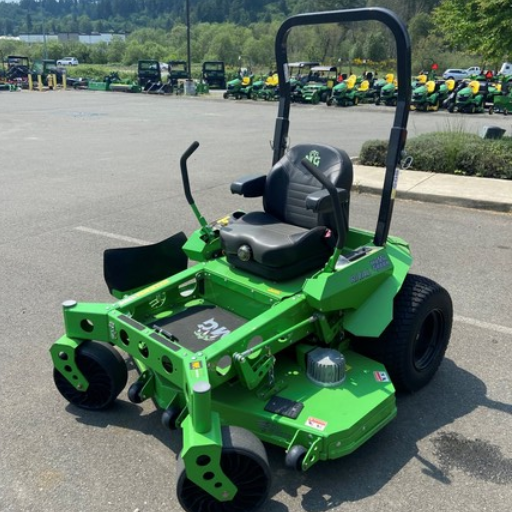
Maintaining a used lawn mower involves cleaning, oil changes, blade sharpening, air filter checks, and proper storage to ensure optimal performance and longevity.
|
Key Point |
Details |
|---|---|
|
Clean Mower |
Remove debris regularly |
|
Oil Change |
Replace oil periodically |
|
Sharpen Blades |
Ensure clean grass cuts |
|
Check Filter |
Clean or replace air filter |
|
Inspect Spark |
Replace spark plugs yearly |
|
Fuel Care |
Use stabilizer, drain for storage |
|
Store Properly |
Dry, clean storage |
Routine Maintenance Tips
- Clean the Underside of the Mower Regularly
Grass clippings, dirt, and debris can accumulate under the mower deck, affecting performance and airflow. After each use, clean the underside thoroughly using a hose or scraper to maintain efficient cutting and prevent corrosion. For safety, always ensure the mower is turned off and properly secured before cleaning.
- Sharpen the Blades Periodically
Dull blades tear grass rather than cutting it cleanly, which can weaken the lawn and create brownish edges. Experts recommend sharpening mower blades after roughly 20-25 hours of use, or at least once per mowing season, to ensure a healthy, evenly cut lawn.
- Change the Oil as Needed
Just like any engine, a lawn mower requires clean oil to operate efficiently. For gas-powered mowers, change the oil after every 25-50 hours of use or at the start of each mowing season. Fresh oil ensures smooth operation and helps prevent engine wear and overheating.
- Inspect and Replace the Air Filter
A clogged or dirty air filter can reduce engine efficiency and increase fuel usage in gas-powered mowers. Replace the air filter annually or more frequently if you mow in particularly dusty conditions. A clean filter allows for optimal airflow, improving overall performance.
- Check the Spark Plug
The spark plug is crucial for proper engine ignition. Over time, it may wear out or become fouled, impacting the performance of gas-powered mowers. Inspect the spark plug annually, and replace it every 100 hours of use or once per year to ensure reliable starting and smooth operation.
- Keep the Tires Inflated and Aligned
For mowers with wheels, uneven tire pressure can lead to an uneven cut and make handling more difficult. Check the tire pressure regularly and ensure all tires are properly inflated. Additionally, inspect for wear and alignment to keep your machine balanced and functioning effectively.
- Store the Mower Properly in the Off-Season
During colder months or periods of non-use, proper storage is key to extending the mower’s lifespan. Clean the mower thoroughly, empty the fuel tank (if applicable), and store it in a dry, covered location away from extreme temperatures and moisture to prevent rust and damage.
By following these detailed tips, you can maximize the lifespan and efficiency of your lawn mower, ensuring it performs reliably for seasons to come.
Common Repairs and Troubleshooting
Taking care of any lawn mower comprises fixing common issues with time. Knowing what problems occur frequently and how to treat them saves time as well as money.
1. Engine Won’t Start
Starting problems are the most common complaints about mowers. Generally, the causes could be old fuel, a dirty air filter, or a worn spark plug. From the operator’s perspective, keep the fuel fresh, check the spark plug for any corrosion or carbon deposits, change the air filter once yearly, or more often if you run the mower in very dusty conditions.
2. Cut Poorly
Uneven grass cutting or poor performance is usually caused by poorly sharpened mower blades. Check the blades regularly and sharpen them whenever appropriate. Make sure the blades are balanced well in operation. Poorly adjusted cutting decks may also lead to unsatisfactory results. Check height and verify that it is level to ensure uniform cutting.
3. Excessive Vibration or Noise
Unusual vibrations or noises during mowing may be caused by loose or broken parts such as the blade or engine mounts. Tighten any loose components; inspect the blade for bends, chips, or improper installation, and replace defective parts preferably as soon as possible to prevent more mechanical issues.
4. Mower Won’t Self-Propel
A self-propelled mower would cease to work if the cause is either a broken drive belt or a worn cable. A visual inspection for cracks or wear of the belt is recommended, and replacement should be made if necessary. Also, check the tension of the drive cable, as it can become loose and require adjustment or replacement over time.
5. Smoke From A Mower
A smoking mower is pretty scary; however, it is normally an oil spill or an overfilled oil reservoir. Check your mower oil and do not let spillage fall on the engine. If it does not give in to stop smoking, then it is probably because of big engine troubles such as worn-out piston rings requiring professional help.
6. Lawn Mower Stalls During Use
Getting stalled usually comes from a clogged carburetor due to use of old fuel. Try cleaning the carburetor using a carburetor cleaner spray or take it to a shop for extensive clean or rebuilt service.
All these problems could mostly be avoided with regular maintenance and immediate action. Always refer to your mower’s user manual for specific instructions and compatibility of parts. For more serious and/or persistent problems, consult a qualified technician to ensure safe and thorough repairs.
Extending the Life of Your Equipment
Regular maintenance and proper storage are what I emphasize to prolong my equipment life. I clean components like filters and blades, treat the fuel well, and never allow any minor defect to grow bigger. I also store the mower in a dry and sheltered place to save it from weather damage. When following these steps from time to time, the equipment’s lifespan is maximized, as well as its performance.
Finding the Best Deals on Used Lawn Mowers in Minnesota
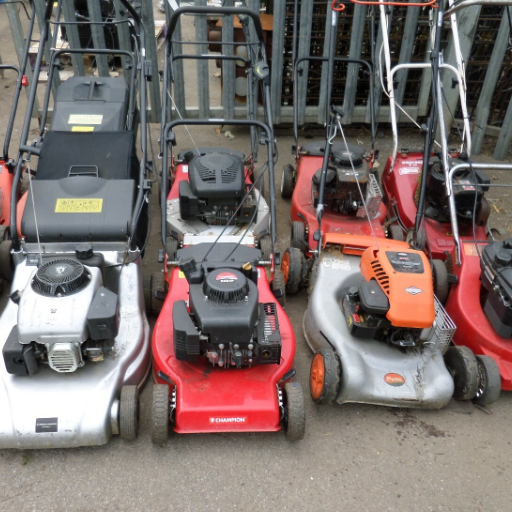
While trying to snap up a used mower at good prices in Minnesota, start by looking into classifieds online: Craigslist, or Facebook Marketplace for listings near you. Target thrift stores, sale-garage, or estate sales for cheap offerings. Another option is to slip in on quality dealers in the trade or repair shops. They may be having trade-ins or mowers refurbished for good prices. Scour the mower for wear and signs of damage, and try out its functionality before buying. Compare prices from more than one source to ensure that you get the best value.
Local Sales and Inventory Opportunities
When trying to buy cheap lawn equipment, it’s good to explore various local resources and utilize fresh data on current availability and price trends. Community-based platforms, such as those built around neighborhoods or localities, have become trendy for buying and selling secondhand items. These sites usually bombard users with the whole spectrum of lawn mowers-from cheapies to high-end brands-that a buyer can look through depending on what brands and models fit their needs.
Going further, seasonal discounts and sales events can affect local hardware and home improvement stores, causing horizontal changes in the stock. For example, along with many retail chains giving discounts on lawn equipment at the end of summer, they need to stock up for fall products. Independent stores, on the other hand, may entertain a bit of negotiation if one requests prices on refurbishes or overstocked equipment.
Inventory certainly trends toward more environmentally friendly models such as electric and battery-powered mowers. Buyers who favor sustainability will find some well-priced options in this category by exploring both bigger retailers as well as their local shops with a green agenda. By combining tactics, scanning through digital platforms, going to brick-and-mortar stores, and probing for seasonal sales, you can find trustworthy gear within your budget.
Online Marketplaces for Used Equipment
Online marketplaces are a practical source for locating high-quality used equipment and pricing them competitively. Craigslist, Facebook Marketplace, and OfferUp let browsing down a broad assortment of secondhand equipment, such as lawn mowers, garden tools, and other implements, offered quite often at a fraction of the cost of a brand-new alternative. Besides, sites such as eBay really do grant access for auction-style or fixed-price options, thereby assisting any budget and need.
For brand or model-oriented buyers, hence MachineFinder and Equipment Trader serve after a brand and model orientation and focus on agricultural and industrial equipment. Statistical data have recently shown that Facebook Marketplace and Craigslist rank among the platforms with the highest server traffic, with millions of users engaged in local exchanges. Such platforms are perfectly suited for bulky items that would be expensive to ship-and usually arrange pickup in person.
In order to produce a safe transaction and ensure outstanding quality, buyers should check the item details, examine the pictures very well, and, if possible, verify the equipment physically before going through the final purchase. Peer reviews, seller ratings, and buy protections available on some of the platforms make choosing great items and selling them less risky than about buying and selling used things. Hence, a perfect tool for finding very good quality but inexpensive equipment either locally or even beyond.
Negotiating the Best Price
Preparation and strategy run parallel with careful pricing negotiations and ensuring you receive the best price for an item. Start with an earnest attempt to find out what it is currently worth. Price comparisons among different sites and sellers will enable you to establish a fair price. Studies on pricing trends in secondhand equipment reveal that such items usually sell for from 20% to 50% less than the asking price at the time of retail sale, depending on their condition, age, and demand.
Timing, too, may weigh heavily: sellers might negotiate more at the end of months, quarters, or years if they feel pressured to close sales. The seller might be more willing to discount the price if the buyer chooses bundled purchases or cash payments.
Maintain a polite firmness when negotiating with a counterpart. Present counteroffers and back them with logical explanations, such as pointing out any surface wear or other features that may detract from the item’s value. Rapport will build along the way, and being genuinely interested in the item can only help your cause. Lastly, do keep that proverbial door open; walk away if it is out of your budget since this move will most often put the seller in a position to reconsider.
Reference Sources
-
Smart Lawn Mower
PDF on Academia.edu
Discusses the transition from traditional to electric lawn mowers and their environmental impact. -
Design and Implementation of Intelligent Lawn-Mower Robot
PDF on Academia.edu
Explores the design and functionality of robotic lawn mowers for precise grass cutting. -
Simple Design of Self-Powered Lawn Mower
PDF on Academia.edu
Covers the invention and mechanics of lawn mowers, including their historical and modern uses.
Frequently Asked Questions (FAQs)
What should I consider when buying used lawn mowers?
When buying used lawn mowers, consider factors like the mower’s condition, maintenance history, and whether it suits your lawn size. Check for rust, blade sharpness, and engine performance. A quality used mower can save you money while still getting the job done efficiently.
What types of used lawn mowers are available?
You can find a wide selection of used lawn mowers, including ride-on mowers, zero turn mowers, and lawn tractors. Each type has its own advantages, such as maneuverability with a zero turn mower or the power of a garden tractor for larger yards.
Where can I find lawn mowers for sale near me?
To find lawn mowers for sale near you, check local classifieds, online marketplaces, and equipment dealers. Many sellers offer quality used equipment that can help you upgrade your lawn care without breaking the bank.
What is the advantage of a zero turn mower?
A zero turn mower offers superior maneuverability and a smaller turn radius, allowing you to navigate tight spaces in your garden. This makes them ideal for complex lawns where precision is key, helping you get the job done faster and more efficiently.
How do I maintain a used lawn mower?
Maintaining a used lawn mower involves regular tasks such as cleaning the deck, sharpening the blades, and changing the oil. Keeping up with maintenance ensures that your mower remains in top-notch condition and continues to perform well over time.
What should I look for in a garden tractor?
When selecting a garden tractor, look for features like horsepower, cutting width, and attachment compatibility. A well-maintained used garden tractor can handle a variety of tasks, making it a versatile addition to your lawn care equipment.
Are there affordable options for used lawn equipment?
Yes, there are many affordable options for used lawn equipment. You can find budget-friendly mowers, including self-propelled and ride-on models, that can still deliver high performance for your lawn care needs.
What is the average price range for used lawn mowers?
The price range for used lawn mowers can vary significantly based on brand, condition, and features. Typically, you can expect to pay anywhere from a few hundred to a couple thousand dollars, depending on whether you’re looking at a simple push mower or a more complex ride-on model.



